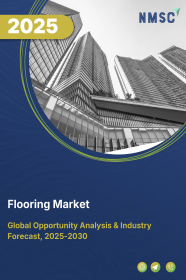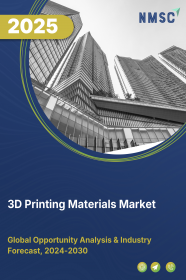
3D Printing Materials Market by Type (Plastic, Metal, Ceramic and Others), by Form (Powder, Filament, and Liquid), by Technology (FDM, Polyjet, Stereolithography, SLS, and Others), by Application (Prototyping, Tooling, and Functional Parts), and by End User (Automotive, Consumer Electronics, Aerospace, Healthcare, and Others) – Global Opportunity Analysis and Industry Forecast 2025-2030
US Tariff Impact on 3D Printing Materials Market
Trump Tariffs Are Reshaping Global Business
3D Printing Materials Market Overview
The global 3D Printing Materials Market size was valued at USD 2.93 billion in 2024 and is predicted to reach USD 11.00 billion by 2030, with a CAGR of 24.8% from 2025-2030.
The growth in automotive sector across the globe, expanding aerospace industry and growing demand for consumer products fuels the market growth. However, the scarcity of resources that is with the limited stock available in the market slows down the overall growth of the market. On the contrary, introduction of solvent-free polymers is anticipated to create future opportunity for the growth of the market.
Additionally, the major players operating in the market include SSAB and Evonik are practicing various business strategies out of which one is product launch to expand their market presence and flourish the products that they offer. As there is an introduction of solvent free polymers the market is set for further revolution and expand its footprints as these polymers will improve the safety and efficiency of 3D printing and also reduce emissions and allow for cleaner production.
Growth in Automotive Sector Fuels Market Growth
The expanding automotive sector globally drives the demand for additive manufacturing materials as manufacturers embrace advanced technologies for enhancing production efficiency and driving down costs. It has permitted automobile makers to swiftly set up parts and components, thus facilitating rapid prototyping, design iterations, and reduced production timelines.
The International Organization of Motor Vehicle Manufacturers reported that the overall car production in 40 countries including China, the US, India, and Japan, reached around 93 million in 2023, from 85 million in 2022.
Expanding Aerospace Industry Drives the Market Growth
The aerospace industry growth and additive manufacturing raise for 3D printing materials market demand to enhance efficiency and cut costs. These materials enable the rapid creation of lightweight and complex components that are important for modern aircraft and spacecraft.
Global space economy grew 8% in 2022, reaching USD 546 billion from USD 501 billion as per Space Foundation. The boom in space exploration and satellite deployment leads to a surer newer development in which materials will rise, in turn, encouraging the demand for 3D printing materials that meet the aerospace industry's tough performance and durability standards.
Growing Demand for Consumer Products Fuels Market Growth
The increasing demand for consumer products such as jewellery and shoes for customization and uniqueness has led the manufacturers to resort to 3D printing technology that meets this need. This technology helps produce complex, personalized products which traditional manufacturing methods.
Limited Availability of 3D Printing Materials Hinders the Market Growth
The limited availability for materials restrains the growth of the market as industries such as aerospace and healthcare require materials that are durable and heat resistance to meet specific performance and quality standards.
Advancement in Polymer Products Creates Future Opportunity for the Market
The introduction of solvent-free polymers is anticipated to create future opportunity for the market. These polymers will improve the safety and efficiency of 3D printing, as they reduce emissions and allow for cleaner production.
For instance, researchers at Duke University are developing novel solvent-free 3D printing materials. The process completely eliminates the need for solvents. This improvement means that the technology is safer and more eco-friendly. Plus, these can be customized for different applications-from biodegradable implants in medicine to submitted demands for more sustainable and, hence, safer solutions.
Market Segmentation and Scope of the Study
The 3D printing materials market report is segmented on the basis of type, form, technology, application, end user, and region. On the basis of type, the market is classified into plastic, metal, ceramic and others. On the basis of form, the market is divided into powder, filament, and liquid. On the basis of technology, the market is segmented into FDM, polyjet, stereolithography, SLS, and others.
On the basis of application, the market is characterized into prototyping, tooling, and functional parts. On the bases of end user, the market is classified into automotive, consumer electronics, aerospace, healthcare, and others. Regional breakdown and analysis of each of the aforesaid segments include regions comprising North America, Europe, Asia-Pacific, and RoW.
Geographical Analysis
North America region holds the dominant 3D printing materials market share and is projected to maintain its dominance throughout the forecast period. This is attributed to the growing aerospace industry in the region as it is essential to create lightweight and complex parts essential for modern aircraft and spacecraft, that improves fuel efficiency and overall performance.
According to a report by NASA, the government of the U.S. allocated around USD 12.8 billion to invest again in its space sector for the year 2025 to extend NASA's exploration of Earth and space. Hype for the funding for space exploration has continued to fuel the growing demand for advanced 3D printing materials for manufacturing lightweight, strong, and complex components used in spacecraft, satellites, and various other space technologies.
Moreover, the rising adoption of 3D printing in consumer products including shoes drives the growth of the market as manufacturers are using these technologies to design footwear according to the latest trends that meets individual consumer preferences.
For instance, in October 2024, Elastium partnered LaLaLand Production and Design, one of the largest manufacturers of shoes in California to expand 3D printing in the footwear industry. Such incentive creates demand for the materials to match the changing taste of consumers who want innovative, high-quality products.
The 3D printing materials industry in the Asia-Pacific is expected to grow due to the rising automotive sector and new technologies. This is because of the increasing automotive industry in the region as manufacturers choose technologies that improve production and design. This technology enables the creation of lightweight and complex components that enhances vehicle performance and fuel efficiency.
According to World Population Review, China produced about 27 million vehicles, Japan about 7.8 million, and India 5.5 million in the year 2022. An escalation of production in these regions increases the demand for advanced materials for lowering production costs and enhancing the quality of automotive components.
Additionally, growing healthcare sector drives the 3D printing materials market growth as medical professionals increasingly adopt 3D printing technology to enhance patient care and treatment outcomes. This technology enables the production of customized implants, prosthetics, and surgical tools with high precision, meeting specific patient requirements.
As of May 2023, the National Library of Medicine reports about 36,570 hospitals and 977,790 primary clinics in China. This rise in healthcare facilities boosts the need for advanced medical solutions and 3D printing materials.
Competitive Landscape
The 3D printing materials industry comprises of various key players such as Eplus3D, 3D Systems Corporation, Materialise NV, Exone, Evonik, SSAB, Arkema S.A., Hoganas AB, Aurum3D, The Lubrizol Corporation DIC Corporation, Maker Global, Stratasys Ltd., EOS GmbH, Sulapac Oy, and others. These companies are adopting various strategies including product launch to stay competitive and maintain their market positions.
For instance, in November 2024, 3D system announced to launch advanced printing and materials designed to meet variety of application needs and accelerate innovation. This introduction aims to enhance efficiency and performance in various applications.
Furthermore, Evonik launched new 3D-printable materials containing flame retardant PA12 and carbon black-embedded powders in November 2024, pushing the capabilities of additive manufacturing further. Development is always underway to address the rising needs for high-performance materials.
Moreover, in March 2024, SSAB launched emission free steel powder, made from recycled SSAB Zero steel, enabling sustainable 3D printing without fossil carbon dioxide emissions. This innovative product combines high strength properties with eco-friendly production to reduce carbon footprints.
Key Benefits
-
The report provides quantitative analysis and estimations of the 3D printing materials market from 2025 to 2030, which assists in identifying the prevailing market opportunities.
-
The study comprises a deep dive analysis of the current and future 3D printing materials market trends to depict prevalent investment pockets in the industry.
-
Information related to key drivers, restraints, and opportunities and their impact on the 3D printing materials market is provided in the report.
-
Competitive analysis of the players, along with their market share is provided in the report.
-
SWOT analysis and Porters Five Forces model is elaborated in the study.
-
Value chain analysis in the market study provides a clear picture of roles of stakeholders.
3D Printing Materials Market Key Segments
By Type
-
Plastic
-
Metal
-
Ceramic
-
Others
By Form
-
Powder
-
Filament
-
Liquid
By Technology
-
FDM
-
Polyjet
-
Stereolithography
-
SLS
-
Others
By Application
-
Prototyping
-
Tooling
-
Functional Parts
By End User
-
Automotive
-
Consumer Electronics
-
Aerospace
-
Healthcare
-
Others
By Region
-
North America
-
The U.S.
-
Canada
-
Mexico
-
-
Europe
-
The UK
-
Germany
-
France
-
Italy
-
Spain
-
Denmark
-
Netherlands
-
Finland
-
Sweden
-
Norway
-
Russia
-
Rest of Europe
-
-
Asia Pacific
-
China
-
Japan
-
India
-
South Korea
-
Australia
-
Indonesia
-
Singapore
-
Taiwan
-
Thailand
-
Rest of Asia-Pacific
-
-
RoW
-
Latin America
-
Middle East
-
Africa
-
Key Players
-
Eplus3D
-
3D Systems Corporation
-
Materialise NV
-
Exone
-
Evonic
-
SSAB
-
Arkema S.A.
-
Hoganas AB
-
Aurum3D
-
The Lubrizol Corporation
-
DIC Corporation
-
Maker Global
-
Stratasys Ltd.
-
EOS GmbH
-
Sulapac Oy
REPORT SCOPE AND SEGMENTATION:
|
Parameters |
Details |
|
Market Size in 2024 |
USD 2.93 billion |
|
Revenue Forecast in 2030 |
USD 11.00 billion |
|
Growth Rate |
CAGR of 24.8% from 2025 to 2030 |
|
Analysis Period |
2023–2030 |
|
Base Year Considered |
2024 |
|
Forecast Period |
2025–2030 |
|
Market Size Estimation |
Billion (USD) |
|
Growth Factors |
|
|
Countries Covered |
28 |
|
Companies Profiled |
15 |
|
Market Share |
Available for 10 companies |
|
Customization Scope |
Free customization (equivalent up to 80 working hours of analysts) after purchase. Addition or alteration to country, regional, and segment scope. |
|
Pricing and Purchase Options |
Avail customized purchase options to meet your exact research needs. |








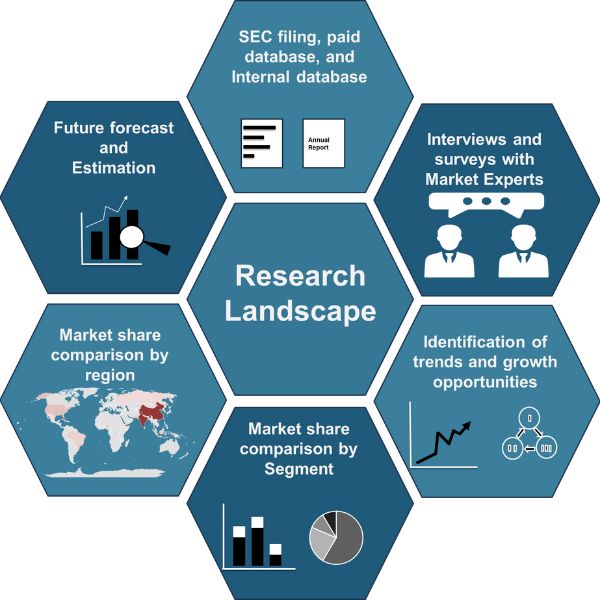
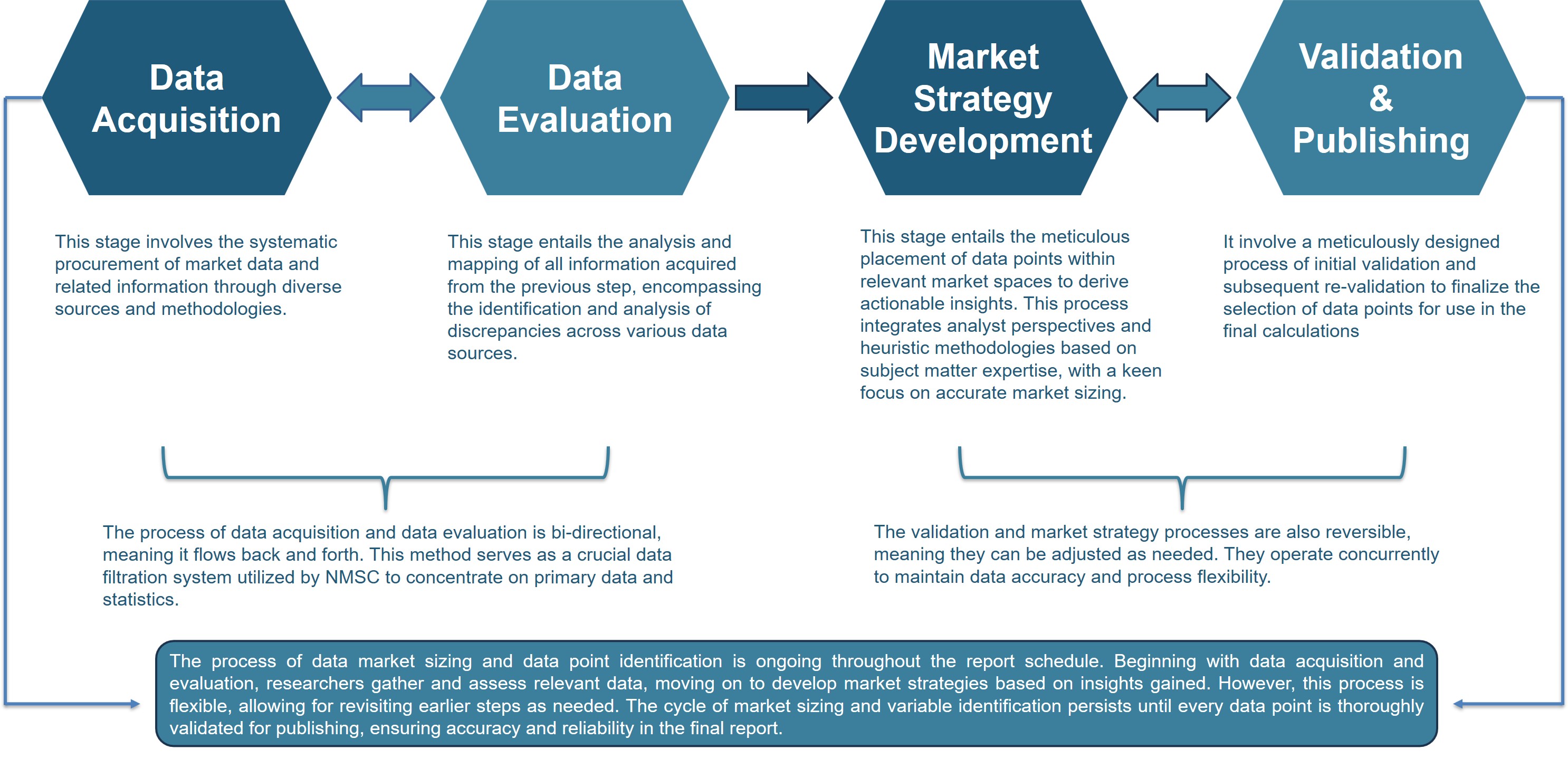



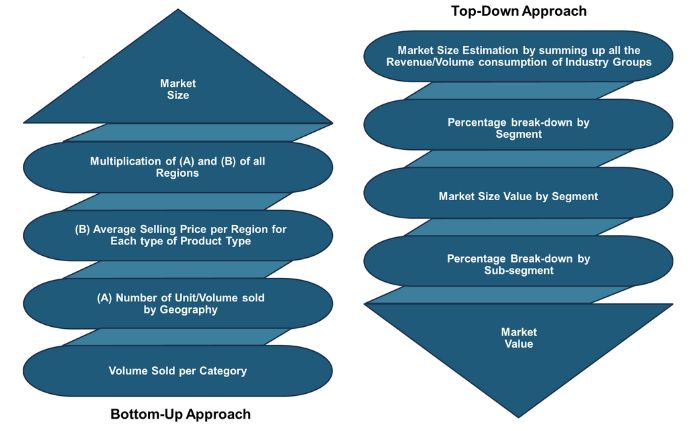
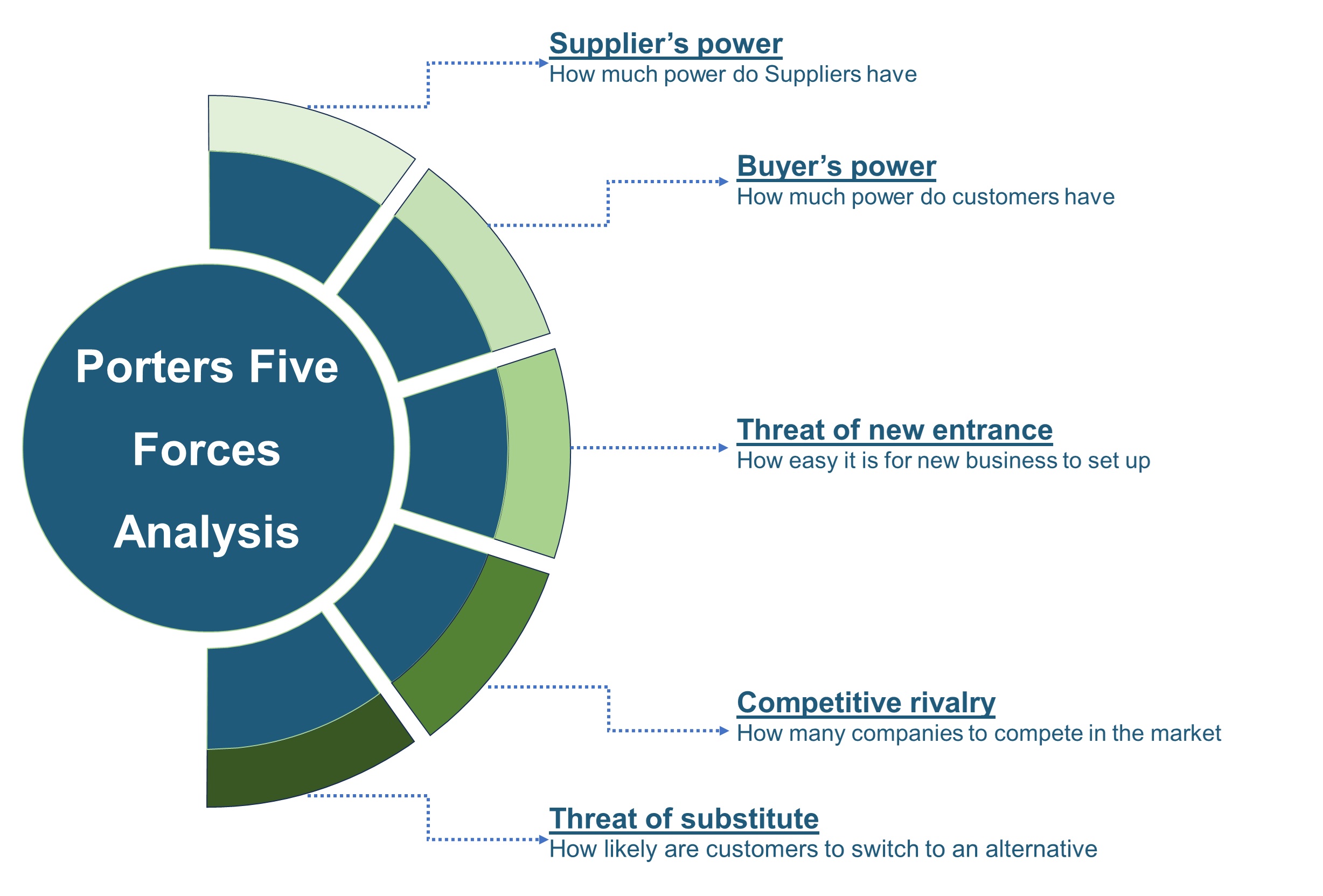


 Speak to Our Analyst
Speak to Our Analyst





